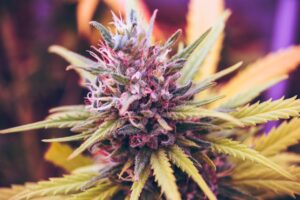Fimming is a pruning technique that transforms your cannabis plant into a bushy, high-yielding beauty. It works by trimming the top of the plant to force lateral growth. Growers then enjoy a dense canopy of buds perfectly suited to maximizing yields. The article looks into cannabis fimming, the benefits it provides, the techniques to apply, and how it differs from topping.
Key Takeaways
- Fimming is a popular technique to encourage bushy growth and a more even canopy in cannabis plants.
- Unlike topping, fimming removes only part of the plant’s top, promoting new branches and lateral growth.
- It’s ideal for growers who want to maximize yields in limited spaces, especially when combined with low-stress training (LST).
What Is Fimming, and How Does It Work?
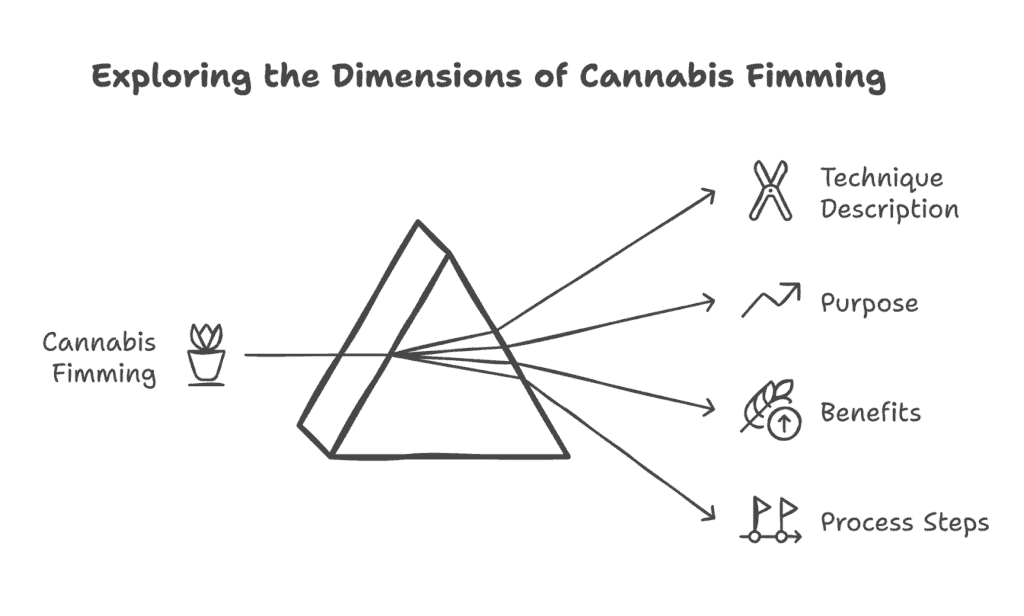
Fimming is a technique where you remove about 75% of the cannabis plant’s new growth at the top. This encourages lateral growth and helps your plant focus its energy on producing more branches rather than a single main cola.
How Is Fimming Done?
Fimming involves pinching or cutting the tip of the plant with precision.
- Tools Needed: Use sterilized scissors or your fingers to avoid stressing the plant unnecessarily.
- Steps to Fim a Plant:
- Identify the top growth of your cannabis plant during its vegetative stage.
- Gently cut or pinch off about 75% of the new growth, ensuring the main stem remains intact.
Fimming is quite effective during the vegetative stage, as it gives the plant time to recover and grow stronger. This technique is similar to topping but allows for more lateral growth and an even canopy.
Why Is Fimming Popular Among Growers?
Fimming is a popular choice for both beginner and professional growers because:
- It’s less stressful on the plant compared to topping.
- It promotes a bushy structure and increased bud sites.
- It’s suitable for Screen of Green (SCROG) setups.
By using fimming, growers can achieve a healthier plant structure while maximizing the light exposure for new growth.
What Are the Benefits of Fimming Cannabis Plants?
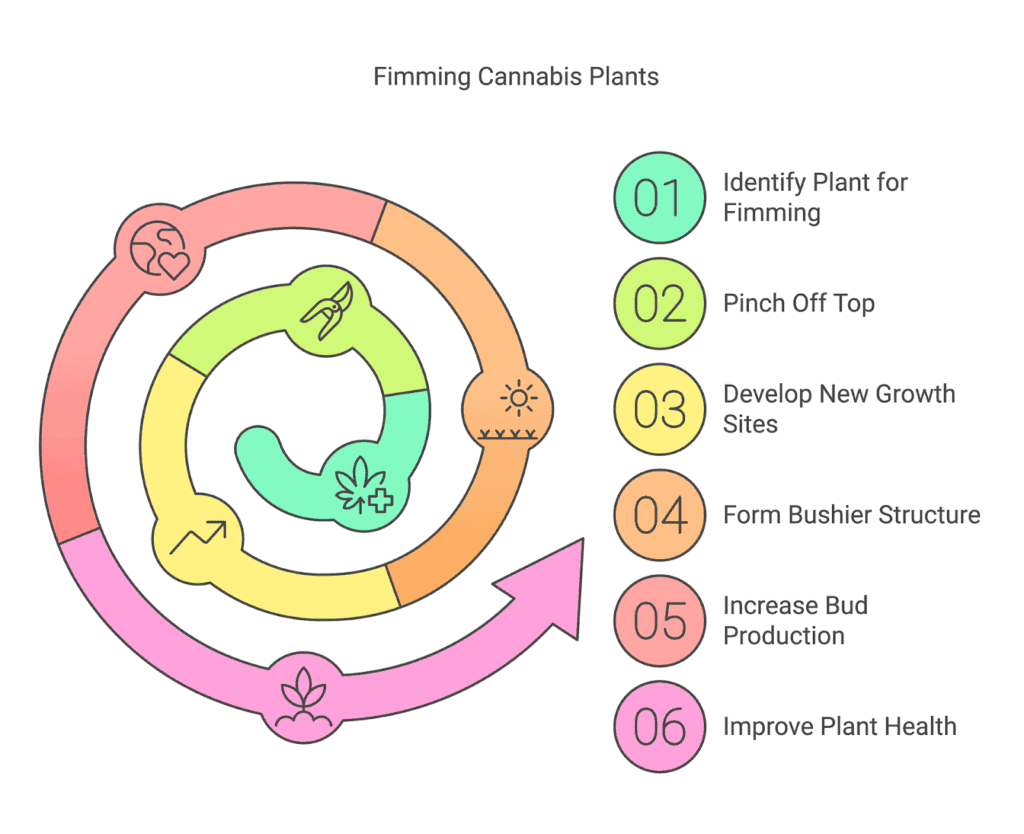
Fimming offers a range of advantages that can optimize your cannabis cultivation process.
Increased Canopy Density
Fimming encourages the growth of new branches and lateral shoots, resulting in a denser canopy. This is perfect for growers using SCROG or other training techniques to maximize light distribution.
Maximizing Yields
By redirecting growth hormones, fimming allows your cannabis plants to produce multiple main colas instead of a single dominant one. This leads to higher yields during flowering.
Compatibility with Training Techniques
Fimming pairs well with other methods like low-stress training (LST). Combining fimming with LST creates a more uniform plant height, ensuring optimal light penetration.
Limitations of Topping and Fimming
While fimming and topping offer many benefits, both techniques have drawbacks:
- Fimming Drawbacks:
- Can stress the plant if not done correctly.
- Results may vary depending on the strain.
- Topping Drawbacks:
- Removes the entire tip of the plant, potentially extending the vegetative stage.
- Requires more time for the plant to recover.
While fimming has its limitations, careful execution can significantly improve the growth potential of your cannabis plants.
How Does Fimming Compare to Topping Cannabis Plants?
Fimming and topping are often confused, but they differ significantly in technique and outcome.
| Aspect | Fimming | Topping |
| Technique | Removes 75% of the top growth | Removes the entire tip of the plant |
| Stress Level | Lower stress on the plant | Higher stress, longer recovery time |
| Growth Outcome | Promotes lateral growth, bushy structure | Produces two main colas |
| Recovery Time | Shorter recovery time | Longer recovery time |
When Should You Choose Fimming?
- Growing Autoflowering Cannabis: Fimming is ideal for autoflowers due to their shorter growth cycles.
- Indoor Cultivation: Helps manage plant height and maximize light coverage.
- SCROG Setup: Perfect for creating an even canopy.
Fimming is often the preferred choice when compared to topping because it provides similar benefits while reducing stress on your plants.
What’s the Best Time to Fim Your Cannabis Plant?
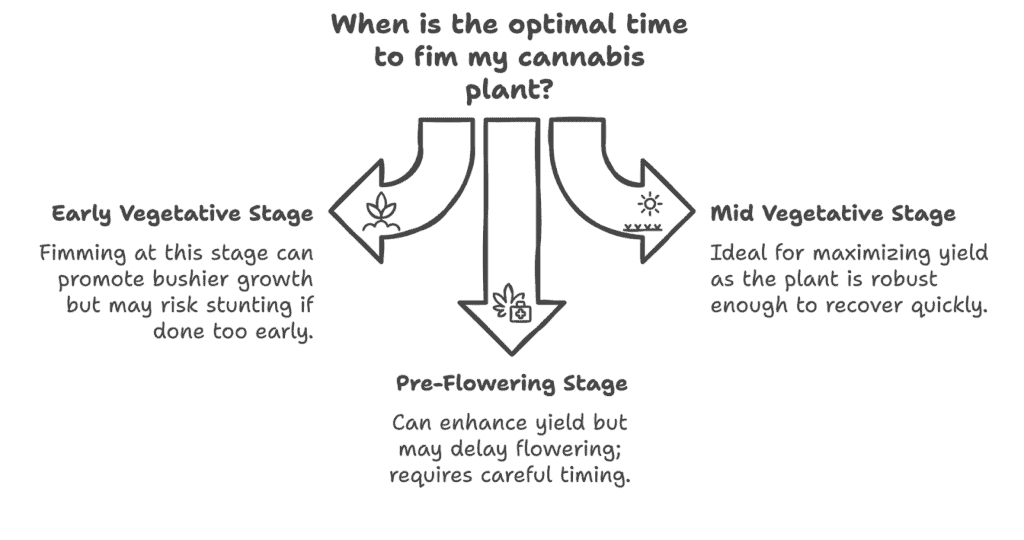
Timing is crucial when fimming cannabis plants. The best time to fim a plant is during its vegetative stage when it has developed at least 3-5 nodes. This ensures the plant has enough energy and growth hormone to recover.
Steps to Ensure Successful Fimming
- Monitor Plant Growth: Identify the vegetative stage for optimal timing.
- Choose the Right Plant Part: Focus on the top growth of your plant.
- Allow Recovery Time: Give your plants time to recover before introducing additional stress like pruning or training.
Combining Fimming with Other Techniques
For maximum efficiency, combine fimming with:
- Low-Stress Training: Bend and tie down branches to encourage horizontal growth.
- Pruning and Training: Remove unnecessary leaves and stems to redirect energy to new growth.
Combining techniques like fimming and LST can greatly enhance your plant’s ability to produce a uniform canopy and maximize yields.
How Can Fimming Improve Indoor Cannabis Cultivation?
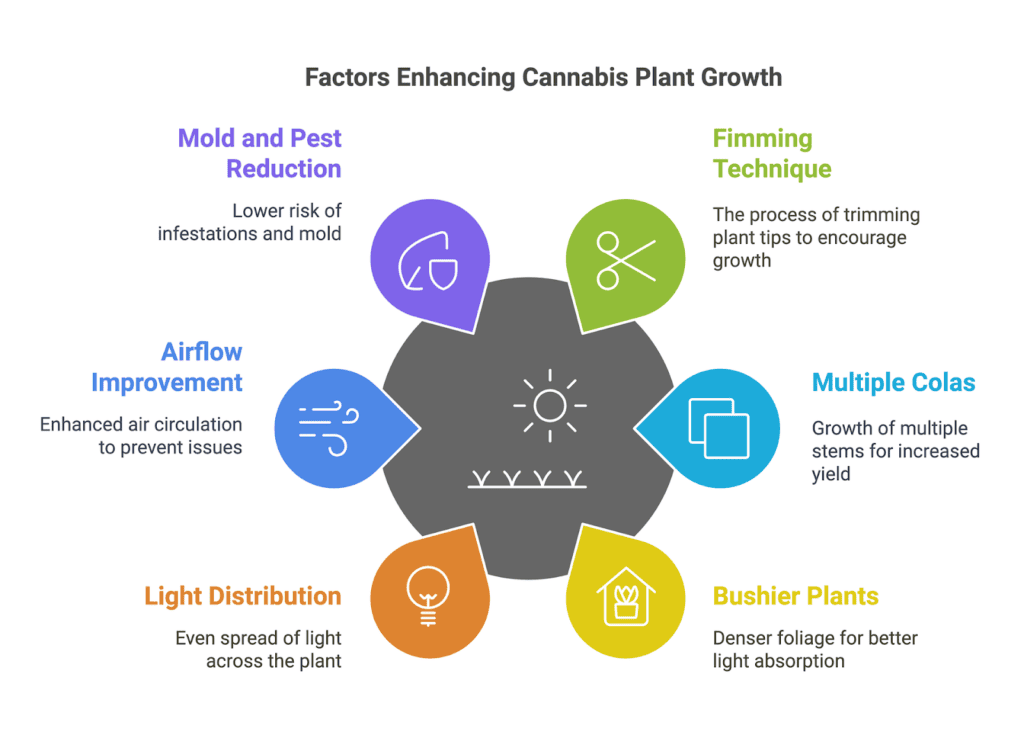
Indoor cannabis cultivation presents unique challenges, and fimming is a valuable tool to overcome them. By encouraging bushy growth and an even canopy, fimming ensures that every part of the plant gets optimal light exposure.
Advantages for Indoor Growers
- Space Optimization: Fimming helps control plant height, making it ideal for small grow rooms.
- Improved Light Distribution: An even canopy ensures all branches receive adequate light.
- Higher Yields in Limited Spaces: By promoting multiple colas, fimming maximizes the plant’s productive potential.
For indoor growers looking to enhance their results, fimming offers a practical and effective solution.
Conclusion
Mastering the art of fimming can really give your cannabis plants a new high, whether in indoor or outdoor cultivation. The technique, the timing, and the benefits all come together so that you make a bushy plant with an even canopy, and more yield from it. And of course, it’s not without its limits, but this is definitely something worth adding to the cultivation toolbox.
Frequently Asked Questions
What is the main difference between fimming and topping?
Fimming removes only part of the top growth, while topping removes the entire tip. Fimming encourages bushy growth, while topping creates two main colas.
Can fimming be done on autoflowering cannabis plants?
Yes, fimming is suitable for autoflowers as it’s less stressful and doesn’t require as much recovery time as topping.
How many times can you fim a cannabis plant?
You can fim your plant multiple times during the vegetative stage, as long as it has time to recover and continues healthy growth.








